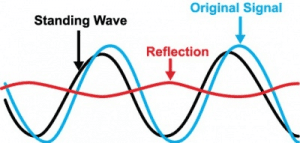In today’s complex world of wireless communications, the radio frequency (RF) power amplifier (PA) provides the final boost in power prior to a signal going out over the air or down a cable. However, choosing the appropriate amplifier for your system can be challenging. While there are many different characteristics of PAs, this blog will focus on when linearity is important.
At the most basic level, PA linearity is how well a PA can amplify a signal without distortion. Linearity is important for systems using any modulation scheme that encodes information in the amplitude variation of the signal. These range from simple Amplitude Modulation (AM) to highly complex Quadrature Amplitude Modulation (QAM).
Similar to what is used for HDTV broadcast and Wi-Fi. Since these modulation schemes rely on the receiver being able to discern the differences in the signal’s amplitude a linear PA is required to preserve the amplitude variation in the signal. If the transmitted signal is distorted by compression of the PA, then the receiver will have a more difficult time recovering the information encoded in the amplitude portion of the modulation. Signal compression can have a negative impact on the system’s range and/or maximum data rate.
.
The compression of the amplifier can be a result of the biasing or the physical limits of the transistors or Field Effect Transistors (FET) used in the amplifier circuit. RF Engineers must take the characteristics of all the components in the signal path to maintain PA linearity. First, different bias levels can be used to operate in different amplifier ‘Classes’. Highly linear amplifiers are operated in Class A. This bias configuration biases the transistor or FET so that it is always conducting. While this is the most linear mode of amplifier operation, this is not very efficient since the amplifier is always drawing the maximum amount of current.
When the limiting factor is the transistor or FET, then a modulated signal that needs good linear performance needs to stay below the compression point of the devices. This is similar to the amplifier being biased for Class A operation in that there is no distortion due to compression and this is an inefficient mode of operation.
To summarize, PA linearity is important when a signal’s information is encoded in the amplitude and system efficiency is not a priority. You can learn more about our RF Power Amplifier Design Services and our experience here. You can also check out our full line of COTS power amplifiers and bidirectional amplifiers.

